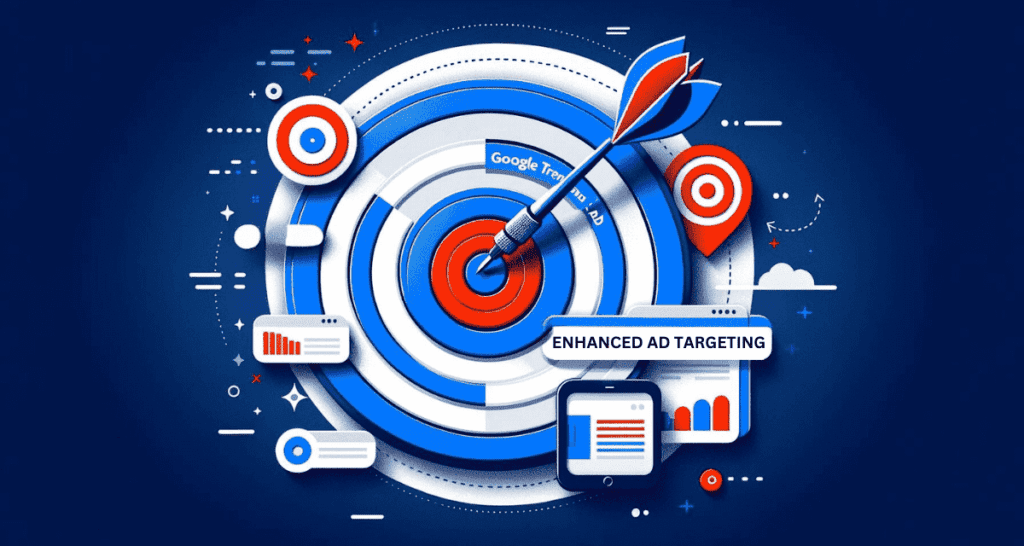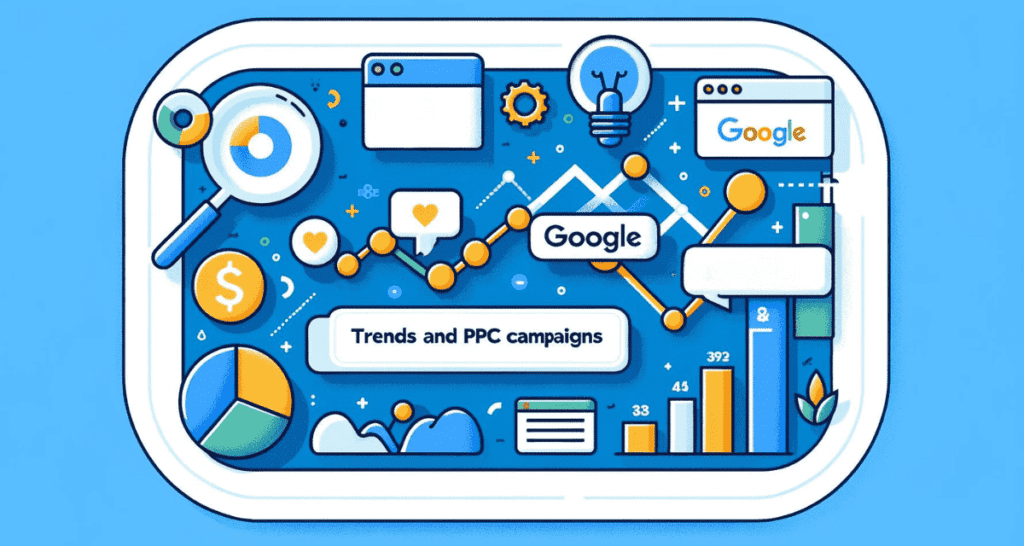Introduction to PPC and Its Importance in Digital Marketing
The Essence of PPC in Digital Marketing
In the vast ocean of digital marketing, Pay-Per-Click (PPC) advertising shines as a guide for businesses aiming to drive traffic and sales efficiently. PPC campaigns stand out by allowing advertisers to pay only when a user clicks on their ads, offering a direct route to engage potential customers. This model’s effectiveness is significantly amplified through targeted advertising, ensuring that ads reach the most relevant audience at the opportune moment.
The Role of Targeted Advertising
Targeted advertising is the heart of PPC’s success. It ensures that your marketing efforts are not just seen but seen by the right people. By focusing on users actively searching for related products or services, businesses can dramatically increase their chances of conversion. This strategic focus on ad targeting is what makes PPC campaigns an essential tool in the digital marketer’s inventory.
Understanding Ad Targeting in PPC Campaigns


The Importance of Precision in Ad Targeting
Ad targeting in PPC campaigns is all about hitting the bullseye. It’s the process of selecting your audience with laser precision based on criteria like keywords, demographics, and location. This ensures that your advertising dollars are spent on users most likely to convert, making every click a potential sale.
Methods of Targeting
PPC campaigns employ various targeting methods to reach their audience. Keyword targeting connects your ads with users based on their search queries. Demographic targeting filters the audience by age, gender, income, etc., while location targeting ensures your ads are seen by users in specific geographical areas. Each method offers unique advantages, allowing marketers to create their approach for maximum impact.
Challenges in Ad Targeting
Achieving effective ad targeting is a dynamic challenge. Marketers must navigate the ever-changing landscape of consumer behavior and preferences, requiring constant adaptation and refinement of their targeting strategies.
Introduction to Google Trends as a Tool for PPC Campaigns
Unveiling Google Trends
Google Trends emerges as a powerful ally for PPC campaigns, offering a window into the minds of consumers. This tool provides insights into the popularity of search queries, helping marketers understand what interests their potential customers. By tapping into this wealth of data, businesses can make informed decisions, creating their PPC campaigns to align with current trends and interests.
The Mechanics of Google Trends
Google Trends operates by analyzing a portion of Google searches to determine how many searches have been done for the terms you’re interested in, relative to the total number of searches done on Google over time. This can reveal patterns of interest among Google users, which can be invaluable for PPC campaign planning.
Benefits for PPC Strategy
Incorporating Google Trends into your PPC strategy can significantly enhance ad targeting. By identifying trending keywords and understanding seasonal variations in consumer interest, marketers can optimize their campaigns for better performance and engagement.
Leveraging Google Trends for Enhanced Ad Targeting


Identifying Trending Keywords
One of the key benefits of Google Trends is its ability to identify trending keywords within your niche. By understanding which terms are gaining popularity, you can adjust your PPC campaigns to capitalize on these trends. This ensures that your ads connect with the current interests of your target audience, increasing the likelihood of engagement and conversion.
Analyzing Seasonal Trends
Seasonal trends play a important role in consumer behavior. Google Trends can help you pinpoint when interest in certain products or services spikes. This insight allows you to schedule your PPC campaigns strategically, ensuring that your ads appear at the times when users are most likely to be interested in what you offer.
A guide from our expert on Analyzing Seasonal Trends with Google Trends will help you go through this topic.
Geographical Insights for Targeted Advertising
Geographical targeting is another area where Google Trends shines. By analyzing search interest in different locations, you can make your PPC campaigns to target specific regions where your products or services are most relevant. This level of targeting ensures that your advertising budget is spent on reaching the most receptive audiences.
Competitive Analysis Through Search Interest
Google Trends also offers a window into your competitors’ performance. By examining how search interest in your competitors’ brands or products changes over time, you can identify opportunities to adjust your PPC strategy. This could involve increasing your ad spend during periods of lower interest in competitors or targeting keywords that are becoming more popular among your target audience.
This resource Google Trends for Competitive Analysis will explain things better.
Practical Applications of Google Trends in PPC Campaigns
Step-by-Step Guide to Incorporating Google Trends
1. Starting with Google Trends
Begin by navigating to the Google Trends website. This is your gateway to uncovering the wealth of data that Google has on search trends. It’s user-friendly and accessible, making it a great starting point for enhancing your PPC campaigns.
2. Keyword Discovery
Enter keywords related to your business or industry into the search bar. Google Trends will display how search interest for these terms has varied over time. This is vital for identifying which keywords are worth targeting in your PPC campaigns.
3. Exploring Related Queries
Don’t overlook the “Related queries” section on Google Trends. This feature suggests additional keywords that are gaining popularity. Utilizing these into your PPC campaigns can help you capture a wider audience interested in your niche.
4. Analyzing Geographical Data
Google Trends provides geographical insights that are invaluable for location targeting. By identifying where your chosen keywords are most popular, you can fine-tune your PPC campaigns to target specific regions or countries, optimizing your ad spend.
5. Applying Insights to PPC Campaigns
Finally, take the insights gathered from Google Trends and apply them to your PPC campaign settings. Adjust your keyword selection, ad scheduling, and geographical targeting based on the data. This ensures that your campaigns are aligned with current search trends and consumer interests.
Tips for Interpreting Google Trends Data
Look for Patterns: Identify consistent trends over time rather than focusing on short-term spikes in interest.
Compare Keywords: Use the comparison feature to see how different keywords stack up against each other in terms of search volume.
Seasonal Adjustments: Plan your PPC campaigns around seasonal trends to capitalize on periods of high interest.
Advanced Techniques and Considerations


Integrating Google Trends with Other Tools
Google Trends is a powerful tool on its own, but its true potential is unlocked when used in conjunction with other digital marketing tools and platforms. Integrating Google Trends data with analytics tools, such as Google Analytics or SEMrush, can provide a more comprehensive view of your audience’s behavior and how it correlates with search trends. This holistic approach allows for more detailed and effective PPC campaigns.
Addressing the Limitations of Google Trends
While Google Trends offers invaluable insights, it’s important to recognize its limitations. The tool provides data on search interest, which may not always directly translate to consumer behavior or intent. Additionally, Google Trends shows relative popularity rather than absolute search volumes, which can sometimes be misleading if not analyzed correctly.
To reduce these limitations, use Google Trends as one of several data sources informing your PPC strategy. Combining its insights with other market research and analytics data can provide a more accurate and complete picture of your target audience.
Future Trends in PPC and Predictive Analysis
The digital marketing landscape is constantly developing, with PPC being no exception. As machine learning and artificial intelligence technologies continue to advance, the potential for predictive analysis in PPC campaigns grows. Google Trends can play a key role in this future, offering early signals of changing consumer interests and market trends.
By staying ahead of these changes and adapting your PPC strategy accordingly, you can maintain a competitive edge. Keep an eye on emerging trends in Google Trends and consider how they might impact your industry or target audience. This proactive approach can help you anticipate shifts in consumer behavior, allowing you to adjust your PPC campaigns for maximum relevance and impact.
Conclusion
Google Trends is an essential tool for enhancing PPC ad targeting, offering deep insights into consumer search behavior and interests. By leveraging these insights, marketers can optimize their PPC campaigns to align with current trends, ensuring that their ads reach the most interested and relevant audiences.
As we look to the future, the importance of data-driven strategies in PPC will only increase. Tools like Google Trends will become even more valuable as we seek to understand and anticipate changes in consumer behavior. By embracing these insights and integrating them into your PPC strategy, you can achieve greater success in your digital marketing efforts.
Remember, the key to effective PPC campaigns is not just in reaching your audience but in reaching the right audience at the right time. Google Trends offers the insights necessary to do just that, making it an fundamental tool for any marketer looking to enhance their ad targeting and drive better campaign results.
- Apple’s Intelligence Taking Over competitors?: Overview To It’s Features - June 12, 2024
- Innovation of Multimodal AI - June 11, 2024
- Common Challenges and Solutions of Video Marketing in 2024 - June 10, 2024

